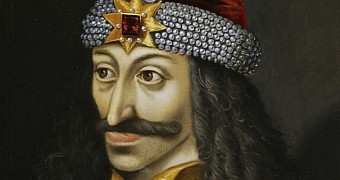Archaeologists exploring a castle in northern Turkey claim to have stumbled upon a long-lost underground cell that they like to refer to as Dracula's dungeon.
What these researchers actually found is two dungeons that remained hidden deep in the entrails of Turkey's Tokat Castle for hundreds of years.
Of these two dungeons, one is believed to have served as a prison for Vlad the Impaler, a 15th century Romanian ruler that many believe served as an inspiration for Bram Stoker's bestselling novel “Dracula.”
The discovery of Dracula's dungeon
As mentioned, the archaeologists behind this find came across the two dungeons while exploring the Tokat Castle in northern Turkey. Together with these cells, the researcher found a secret tunnel and a military shelter.
By the looks of it, this castle in Turkey is pretty much surrounded by secret tunnels. This most recently uncovered one is believed to have led to some nearby Roman baths when still functional.
Interestingly enough, the archaeologists discovered the dungeons, the tunnels, and the military shelter quite by chance. Thus, Huffington Post tells us that they found them during a 10-week restoration project.
A detailed description of the dungeons is yet to be shared with the general public. However, it is understood that they were built much like present-day prison cells. Simply put, those held in them did not enjoy the best living conditions.
What was Vlad the Impaler doing in Turkey anyway?
According to historical records, Vlad the Impaler ended up being held captive at the Tokat Castle in 1442, after his father, Wallachia ruler Vlad II, sometimes referred to as Vlad Dracul or Vlad the Dragon, struck a deal with the Ottoman Sultan Murad II.
As part of this deal, the Sultan was to help Vlad II fight a rival from the neighboring territory of Transylvania. In exchange, the Wallachian ruler was to leave two of his sons, 7-year-old Radu and 11-year-old Vlad III, at the Tokat Castle.
By the looks of it, the Ottoman Sultan demanded that the ruler leave his two kids behind as political prisoners to ensure that Vlad II would remain loyal to him. Vlad III was freed after the death of his father, and moved on to become a Romanian ruler himself.
Mind you, archaeologists are yet to figure out whether the two dungeons discovered at the Tokat Castle did in fact serve as a home for the young Vlad the Impaler and his brother Radu. However, they say that, based on evidence uncovered thus far, chances are the Ottoman Sultan really did keep the two princes in these underground cells.

 14 DAY TRIAL //
14 DAY TRIAL //